About this detail of the Tiger
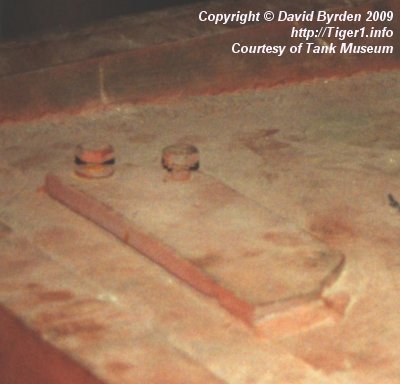
The Tiger was designed with 2 headlights, one at each front corner of the hull top. A base plate for each headlight, shown here, was welded to the hull top. Sockets were bolted to the base plates and the headlights clipped into the sockets.
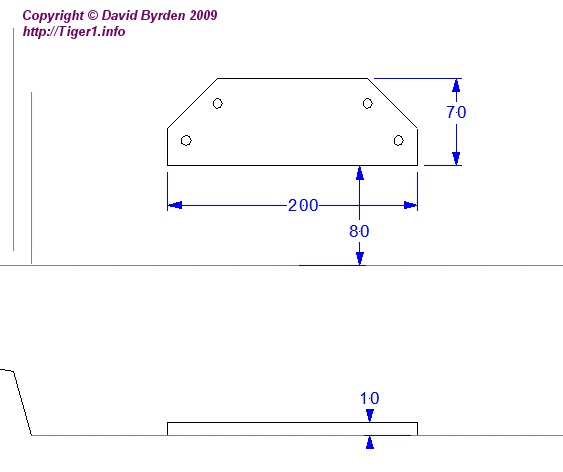
The electric wiring for each light rose through the hull roof just forward of the nearest crew hatch. It ran outwards to the headlight in a metal sleeve of 12mm diameter.
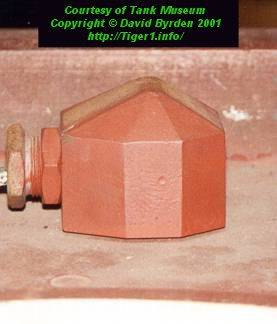
The exit point of the cable was protected by a metal cap. There were two designs for this cap, probably representing the different manufacturers who made Tiger hulls. This is the angular kind, seen on the Tiger in Bovington museum.
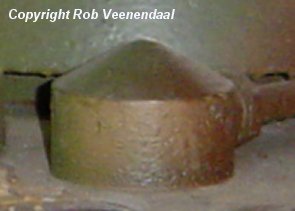
This is the round kind, seen on the Tiger in Saumur museum..

The two caps are shown in this diagram, along with the ventilator and crew hatches.
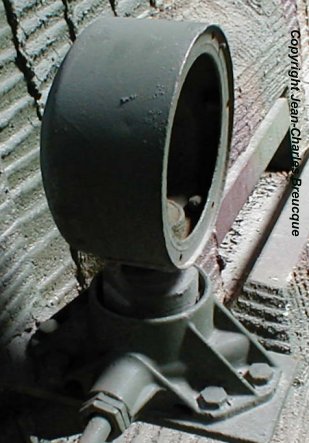
Headlights could be removed from their sockets and stowed inside the vehicle. The socket, visible here, would remain outside on the hull.
In August 1943, the right-hand headlight was deleted [2] . This means that the socket was no longer bolted to the hull, and the power cable was no longer brought through the hull top. However, the flat plate for attaching the socket was still welded to the hull top.

Then in October 1943, the remaining headlight was moved to the center front of the hull, its socket sitting on a metal tongue. The cable and exit cap were moved also, to this position. Both welded plates remained on the hull roof until they were deleted in January or February 1944.
[1] Survey of Tiger 250122, at Bovington museum, by David Byrden
[2] DW to Tiger 1